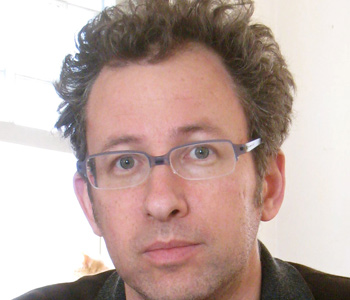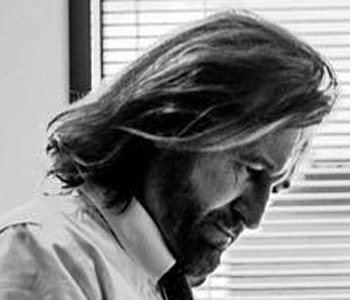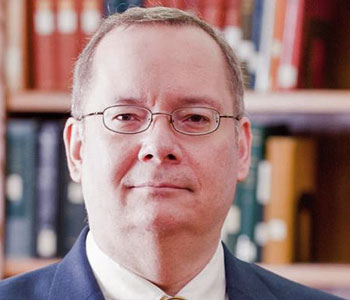Randall Mason
The Once and Future New York: Historic Preservation and the Modern City
University of Minnesota Press
344 pages, 10 x 7 inches
ISBN 978 0816656042
The Once and Future New York is a history of historic preservation’s appearance as a kind of urban reform, design and planning in early 20th-century New York. The book connects the specific ideas, practices, and individuals behind historic preservation to larger questions about design, planning, and urbanism. In other words, OFNY is about the nature of the modern city as a cultural construction as well as a built environment. Using New York City as a case, the book takes on the question of where the historic preservation movement came from, and suggests why preservation continues to make a difference in the quality of American cities.
Writing this history also afforded me the chance to explode a couple myths about preservation and New York. First, that New York is a city defined by tearing down and constantly rebuilding. The city certainly does this, but there is also a long-standing tradition of carefully preserving parts of its historic built environment. The two processes are not necessarily in opposition, but rather complementary. Second, that historic preservation in New York was invented in the 1960s as a reaction to the depredations of urban renewal and Modernism. Preservation flourished in the 1960s as an important reaction against the destructive forces of urban renewal—notably in the loss of Penn Station in 1963 and later the defense of Grand Central station. But, paradoxically, preservation first emerged generations earlier (at least as far back as the 1890s) and was a movement driven by the leading city builders!
The idea that powerful elected officials, reformers and other leading citizens first promoted preservation on New York’s urban stage indicates that preservation was part of their vision for a modern New York. Preservation was part of the same vision that included skyscrapers, extensive subways, a large government, and a newly regulated society, not a reaction against it. This calls forth some very interesting and important characters in New York’s history, otherwise lost to our memory: George McAneny, Andrew Haswell Green, Madison Grant, among others.
There are some fairly instrumental lessons in this history, relevant to contemporary practitioners of preservation in New York as well as other cities. The book argues that historic preservation is a fundamental part of every modern city. Preservation doesn’t give the city its overriding shape and tenor; it’s not a driving force. But the few places stewarded and created by preservationists work as an alloy for modern cities: adding a minor ingredient, they make cities stronger and more robust.
Strategically and tactically, preservationists should embrace these roots of their field, and advance preservation as part of the creative discussion about making the modern cities—rather than as a separate, segregated concern of a few experts, which too often is the case. And those outside the preservation community—designers, developers, public officials, citizens—should take notice of the presence of the material past in all our lives.

Historic preservationists have a surprising lack of curiosity about the history of their own practice and field.
We relate to the past (partly) through things. People and societies keep and create attachments to the past by keeping, collecting, preserving, recreating and otherwise interpreting a whole range of old things—objects, buildings, landscapes. Where material remainders don’t exist, we create them—and call them “memorials.”
The field of historic preservation is one of the ways all modern societies organize a collective function for remembering through making physical memorials. And while preservation is generally seen as a marginal activity (a hobby of rich folks or antiquarians), it provides a highly meaningful window on a society’s use of the past. Because preservation is imagined and practiced at an urban scale, studying its history gives a glimpse of urban dynamics reflected in culture—a main part of which is always wrapped up in attachments to and adaptations of the past.
Historic preservationists have a surprising lack of curiosity about the history of their own practice and field. I address this in Giving Preservation a History, a book I did with Max Page a few years back. This is changing, but slowly. Looking at the history of a field—any field—is crucial for being able to think critically about it. Capacity for critical thinking is one of those aspects of any field that is essential, yet often overlooked (it doesn’t make you more profitable or more popular). As a scholar as well as a practitioner, I think my efforts are well placed to build this critical capacity in a field I believe in personally—and which I believe gives society a capacity to think critically about its history and its present.
My own path to The Once and Future New York and to this very subject was indirect. My first two degrees are in geography, both physical and cultural. As a grad student at Penn State in the late 1980s I began reading a lot of urban and architectural history. Alongside the education I’d had in geomorphology, and my understanding of the natural world, urban and architectural history was really essential to working on cultural landscapes in any robust sense. I kept getting drawn in to studying the built environment, in all its forms. And I had great advisors—geographers Peirce Lewis, Deryck Holdsworth, Ben Marsh and others.
After earning a master’s in geography, I contemplated architecture school, and got jobs doing architecture, working on an architecture magazine, and then a consulting firm doing preservation and planning work. This firm—run by a pioneer named Mary Means—was really doing applied cultural geography. It made me understand the connection between intellectualized concepts of landscape and historical geography and how they are made relevant “on the ground” by governments and nonprofit groups investing in preservation.
I’d always harbored the desire to teach and work as an academic, so I began to think about a PhD. I decided not to pursue geography any further—the intellectual trajectory of the field at that time was deeper and deeper immersion in the critical theory of postmodernism. While this was a revolutionary movement for the field and for the dawning of my own thinking, it led in the opposite direction of my work in the firm.
So I thought a PhD in planning would be the right kind of place to merge intellectual and practical pursuits. Columbia emerged as the best place to study, for a variety of personal and practical reasons. And I was fortunate to find some great scholars to support my work there. The architectural historian Daniel Bluestone was probably most important, as he guided me to the question of how and why preservation emerged in New York as a planning/design issue, and he pointed to the rich archival materials waiting to be worked on. My advisors drew from both history and planning—the historian Betsy Blackmar was my dissertation advisor, Peter Marcuse and Elliot Sclar advised me from the planning side. And I got to take seminars with scholars as diverse as Saskia Sassen, Kenneth Jackson and Simon Schama.
These days, I teach historic preservation to graduate students at Penn. My classes relate to a wide range of subjects that shape how we think about and design built environments with historic value—including planning, history, and cultural landscape studies. Working in a design/professional school is just the kind of challenge I’m interested it—it demands intellectual rigor as well as constant practical application.
These two “close-ups” might compel readers:
The first is the book’s collection of images. The portfolio, chapter images and the book’s cover capture the extraordinary moment in New York’s history in which the book is set. In the 1900s and 1910s, New York was perched on the brink of becoming “the capital of capitalism,” the epitome of modern metropolises. Yet at the same time some of its leading citizens were thoroughly devoted to preserving material aspects of the city’s past as part of its public space.
This cultural foment—searching for usable pasts in all forms of culture—enabled images mixing past and future in delicious ways: the airplanes hovering above old City Hall (spliced in by the photographer), streetcars rushing past vernacular buildings as the photographer tried to capture a portrait, an architect (Hugh Ferris, known as champion of the New York skyscrapers) lovingly sketching an historic church about to be lost, Bronx River Parkway images of “before” and “after” proudly documenting slum clearance and landscape design.
The second “close up” is the revelation that preservation depends so much on destruction, that old buildings (those associated with the “wrong” memories) are not infrequently destroyed at the insistence of preservationists.
That preservationists rely on destroying buildings as much as saving them is one of those great ironies that reveal so much about the discourses and images preservationists project. There are many examples of selective destruction in the service of historic preservation. Williamsburg, the famous historic site in Virginia, was “restored” as an 18th town in the 20th century by destroying a lot of buildings created in the 19th century. Independence Hall in Philadelphia (where I teach) has a vast lawn in front where whole city blocks were cleared in the 1950s to create a proper “jewel box” setting for the main attraction—Independence Hall itself.
The built environments imagined and designed by preservationists are often highly selective—some memories are in, other are out. In preservation parlance, this is the “scrape” approach used by restorers (such as Viollet, or Scott), as opposed to the “anti-scrape” attitude of Ruskin and Morris. The 19th-century debate between these approaches continues to animate historic preservation in the 21th century.
Why do preservationists use destruction as one of their tools? Preservation is about shaping and sustaining memory—particular, collective, historical memories—and fundamentally not just about saving old buildings and objects. Saving old stuff—in preservationist parlance, “historic fabric”—is a means to the end of shaping collective memory. Forgetting this context of their work, preservationists too often fetishize a few old buildings, and sound like self-righteous, narrow-minded, arrogant connoisseurs.

Built environments imagined and designed by preservationists are often highly selective—some memories are in, other are out.
One of the main lessons we can take away from the preservationists I write about is the deep meaning and abiding value of dealing with the built environment holistically. Preservationists understood buildings, parks, monuments, museums, and natural places as sources of meaning for citizens. Providing access to such places as public resources—beyond the ability of markets to provide them—was a brave and revolutionary gesture of reform and an enlightened way to recognize how people experience places.
This holistic perspective has mostly been lost, especially among professional designers, planners, and preservationists. But as a community we are desperately trying to regain it—witness all our strenuous talk of sustainability.
We have learned all too well to separate natural and cultural aspects, historic and not historic aspects, beautiful and ugly aspects, profitable and not profitable aspects of built environments, instead of connecting them. We divide up the world according to the disciplines we represent—history, economics, architecture, etc. The world of design, planning and preservation has a great deal to contribute to making our lives richer, more meaningful, healthier, more aligned with the holism of “environment.” We can enable people to see their own environments with new eyes. But we won’t realize this potential to make the world better unless we transcend disciplinary strictures and biases.
Once and Future New York reminds us of this by putting on display the very holistic, publicly minded work of preservation advocates of a century ago. By combining their deep feeling for the past with the present needs of their city they demonstrated holistic thinking we would do well to emulate.




We don't put paywalls. We don't distract you with ads. We don't sell your data.
Please help to keep this running!